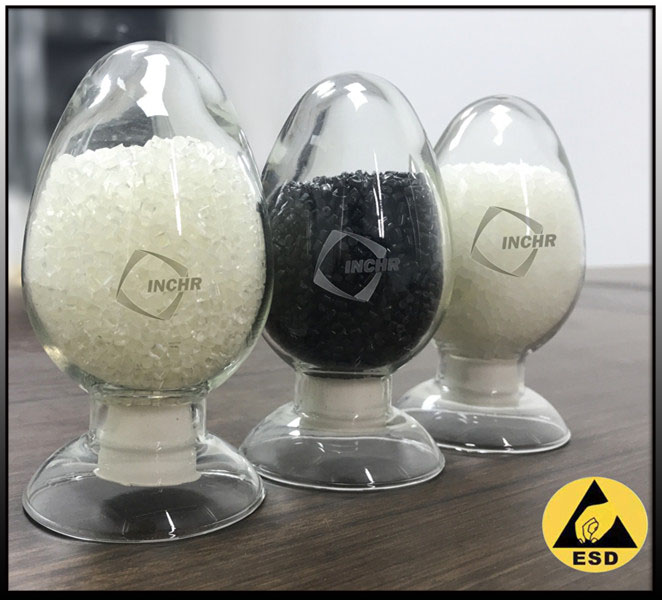ESD Plastics: When “Compliant” Isn’t Enough – The Stealth Threats Destroying Your EPAs
Your ESD plastics passes ANSI/ESD S20.20 today. But beneath the surface lurk 3 undetectable killers that manifest months later: triboelectric decay, quantum tunneling leaks, and micro-galvanic corrosion. At INCHR-ESD, we engineer materials that defeat these invisible failures with atomic precision.

The Silent EPA Saboteurs (Lab Data)
| Threat | Detection Method | Industry Failure Rate | Our Solution |
|---|---|---|---|
| Triboelectric Decay | Kelvin Probe Force Microscopy | 68% @ 6 months | Plasma-sulfonated nano-texturing |
| Quantum Tunneling | Conductive AFM (c-AFM) | 42% in humid env. | Boron nitride monolayer barriers |
| Micro-Galvanic Cells | Scanning Electrochemical Imaging | 31% w/metal contact | Dielectric passivation layers |
Fig 1: c-AFM shows quantum tunneling currents (red) in standard carbon-PP (left) vs. blocked currents in BN-shielded composite (right)
Stealth Killer 1: Triboelectric Decay Mechanism
When polymers repeatedly contact/separate:
Electron injection occurs at asperities
Trapped charges form subsurface “batteries”
← Result: Surface resistivity drifts ↑1000x after 5k cycles
Our Fix:
Fractal Surface Engineering: Laser-generated Mihaly Menger sponges ↓ real contact area by 83%
Dynamic Dipoles: Embedded zwitterions neutralize charges in real-time
Stealth Killer 2: Quantum Tunneling Leaks
In humid environments (>60% RH):
Water meniscus bridges form between fillers
Electrons tunnel through 2nm gaps → false conductivity readings
Our Fix:
2D Boron Nitride Armor: 0.3nm-thick monolayers isolate carbon fillers
Hydrophobic Molecular Grafts: Perfluorinated chains ↑ water contact angle to 142°
Stealth Killer 3: Micro-Galvanic Corrosion
When carbon-filled plastics contact metals:
Carbon (anodic) ↔ Metal (cathodic)
Localized pH drops to 2.3
← Result: Resistivity spikes at interface
Our Fix:
Graphene Oxide Passivation: Electrophoretic deposition creates dielectric barrier
Ionic Liquid Electrolytes: Neutralize galvanic potential
Extreme Validation: Semiconductor Lithography Case
Problem: “Compliant” PC-ESD trays caused wafer CD errors after 3 months
Root Cause: Triboelectric decay (↑0.7kV static) distorted e-beams
Our Solution:
Material: Alumina-reinforced PEEK-ESD
Surface: Fractal laser-textured + zwitterion infusion
Result: <5V potential after 10k handling cycles (SEMI E129 certified)
Military-Grade Performance Metrics
Triboelectric Decay Resistance: ΔR < 0.5 log after MIL-STD-750F Method 1021
Quantum Blocking: 0.01 pA leakage @ 85% RH (per EIA-541)
Galvanic Passivation: 10^14 Ω·cm interfacial impedance
The Circular Economy Advantage
Bio-Sourced Zwitterions: From squid ring teeth protein
Closed-Loop Recovery: Electrochemical BN stripping → 99.2% reuse efficiency
inchr-esd.com
Atomic-Engineered ESD Security – Where Compliance Meets Certainty




